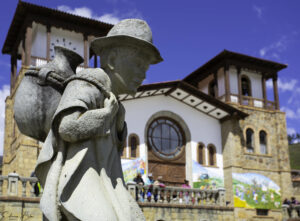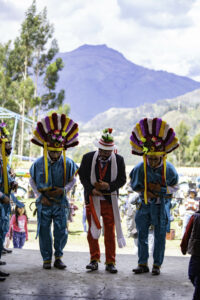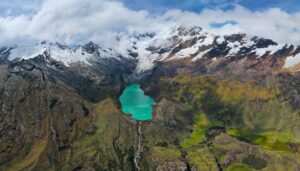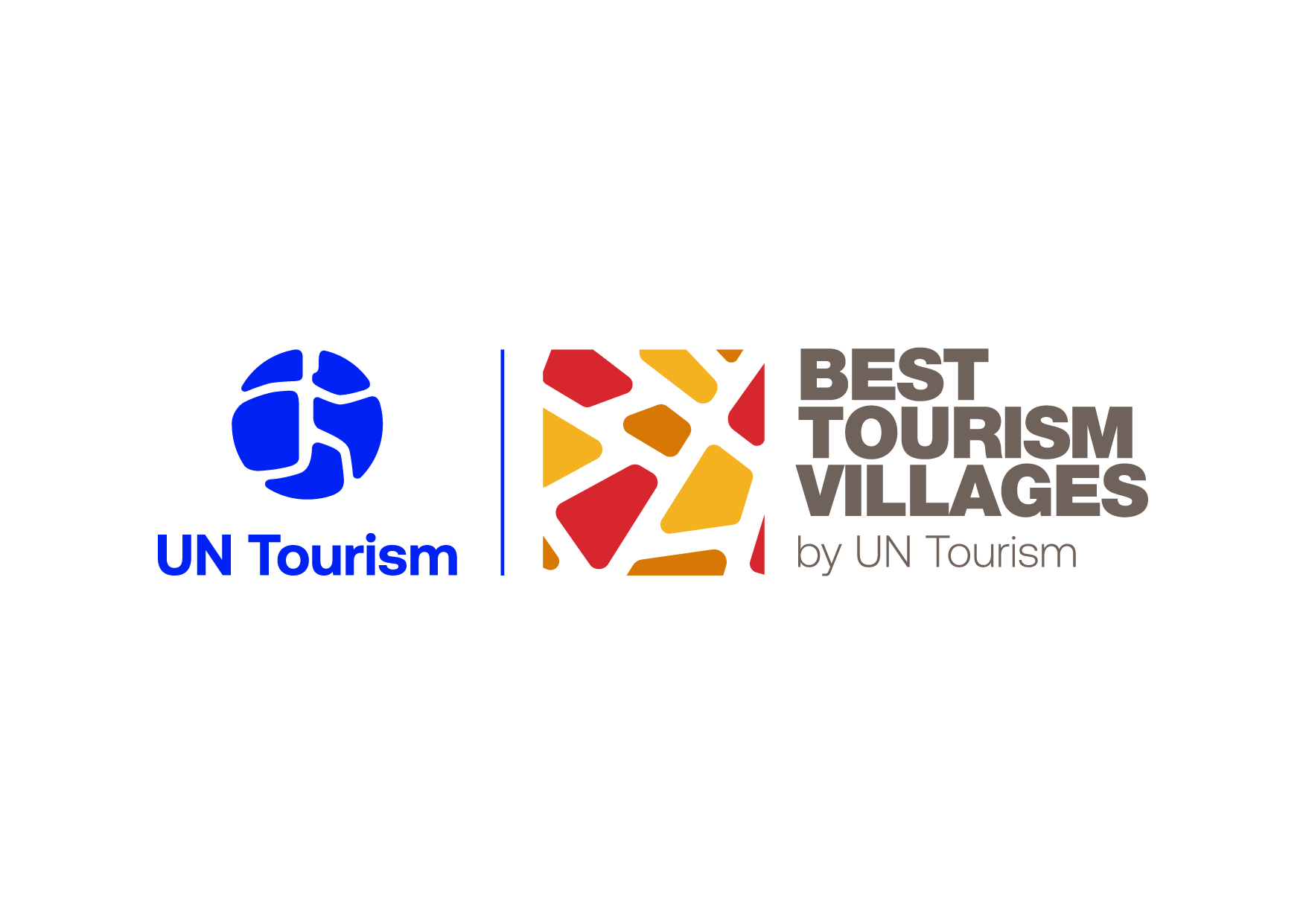Chacas is located on the eastern slope of the majestic Cordillera Blanca, in the Callejón de Conchucos. Callejón de Conchucos, surrounded by the Contrahierbas mountain and the Punta Olímpica tunnel, part of the Huascaran National Park, was declared a Biosphere Reserve and World Heritage Site by the World Heritage Site by UNESCO, and within its territory there are 14 snow-capped peaks and 38 lakes.
Amongst the main attractions lies the Sanctuary of Mama Ashu, declared in 1941 as a National Historical Monument. With its spectacular Baroque style altarpiece which is covered with gold leaf, it dates back to the XVII century and was consecrated as a Sanctuary in 2005.
In temrs of the historical heritage, near the town are the pre-Inca archaeological remains of Antash, Chagastunán, Huaraspampa, and Pirushtu. In the village, the Ugo de Censi square stands out, renowned for its well maintained grassy area where non-fatal bullfights are hosted and the horseback ribbon race during Patron Saint’s day in August. Likewise, the old part of the town maintains its original Andean architecture with Andalusian influence, including cobbled streets and white houses with double-sloped roofs adorned with finely carved balconies and gates. The Sanctuary of the Virgin of the Assumption and the main altarpiece of Chacas, dating from the XVIII century and declared Historical Patrimony of Peru in 1942 are also prominent features of the village.
Interestingly, dances of pre-Columbian origin have survived throughout the ages and include the anti runa, the kiyaya, the yayu, the paso huanquilla, and the mozo danza, the latter being declared Cultural Heritage of the Nation in 2009.
For 30 years the village has been involved in productive activities related to small industries, especially the manufacture of furniture namely beautiful wood carvings, stained glass, and textiles that is exported to the United States and Europe,. These workshops in the village employ local labour and serve as a school for future professionals.
HIGHLIGHTS
-

Governance
The local population and the private sector have created a youth association for tourism with the objective of promoting it alongside the local government and advancing the Chacas Tourism Development Plan.
Similarly, the Institute for the Development of Chacas – INDECHA, promoted the development of projects linked to tourism, by improving the infrastructure of tourist services, building a community centre with orientation managers at the service of the community, implementing tourist signage along the route of the Patarcocha lagoon and working on research projects for the identification of species.
Operation Mato Grosso makes cooperation between villagers, artisans and tourism service providers possible for the development of the tourism sector.
-

Culture, art and tourism
To improve the quality of life of the citizens of the village of Chacas they actively engage in preserving and valuing their cultural heritage, traditions, art and faith. This is evident from the artisans of the village, who, despite being very young and with low economic conditions, were able to establish a successful business model by, receiving training at the Don Bosco Institution. At present, their handicrafts are sold nationally and internationally. This activity contributes to the development of tourism in the locality.
-

Women and Economy
The village of Chacas is part of the Lurawi Peru programme, which receives funding for Immediate Intervention Actions in tourism resources. This programme has also benefited 51 villagers, mostly women and older adults, guaranteeing the development of the population and equal opportunities.
In addition, through the Rural Women’s Entrepreneurship Contest “Project: Integral Development and Increased Income for Producing Families in the District of Chacas in the Province of Asunción”, the people of Chacas have the opportunity to showcase their agricultural and beekeeping production, among others, with the active participation of women.

